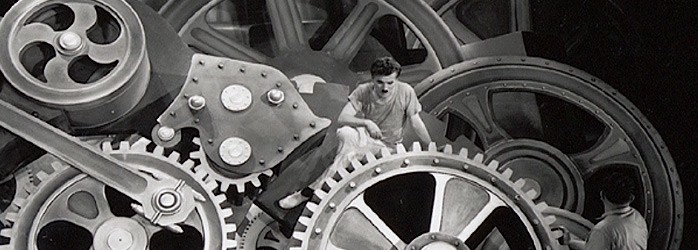“We think too much and feel too little. More than machinery, we need humanity; more than cleverness, we need kindness and gentleness. ”― Charlie Chaplin “The Great Dictator”
Charlie Chaplin knew how to connect with his audience by being empathic and being real. We can also become empathic by focusing on our audience.
We analyze data to extract statistical information about users’ behavior, but we can only see a result of users reaction, not a reaction itself. If we want consumers to build connections with our products we need to remember that users don’t have the same experience level, and they have not invested as much in a product as we did. We have to assume they don’t know anything about our product/service or about how to use it.
Feel more like consumer
by focusing less on yourself
Find not less than five people in your life with different skills and in different age groups that can serve as an ongoing help. These could be people in your life, your spouse, grandmother, friend, child and a person with a disability. You need to observe them in your daily life using different interactive products, without trying to change their behavior.
Ask them questions: Why did you react this way? Why are you trying to do that? What do you need? What are you looking for?
All your observations should be done with kindness and gentleness. It’s not about showing your guides your cleverness. This experience if done with openness can take you out of your head and focus your mind on another person way of doing things.
Mirroring your behaviors for
a better experience.
“The mirror is my best friend because when I cry it never laughs.”
― Charlie Chaplin
Mirroring our own experience is another way to think like a consumer of a product we are working on because we are consumers ourselves.
Ask yourself these questions: Would I enjoy this experience? Did this experience help me in any way? Did I find anything difficult and irritating?
I want to know … how to … but it doesn’t work that way?
Designing things to be easy to use doesn’t accomplish everything. If experience it’s not memorable consumers will not use it. Then, we need to think if we listened to their unique needs or just took them on the path that we thought was best for them. It’s always good to consider as my customized experiences as much as possible, although in reality budgets and timelines don’t always allow for that. We can however always look at a mirror and be honest with ourselves about our work, ideas, requirement of a project or clients expectations.
Collaborate with your audience for a better design
“Life could be wonderful if people would leave you alone”
― Charlie Chaplin
Collaboration is a big buzzword in many corporate environments, but until it stops being that many might prefer to work alone. Collaboration has to do with relationships. Unless we work on the relationship that are real within the company a true collaboration might be difficult. One relationship that we have in common with our peers is our relationship with a consumer our audience. When focusing on our audience rather than what others collaborating with me will think, we can build a relationship with consumers and make everyone feel part of the same team.
It’s a team brain melt that can produce ideas fast and fail fast, that a single individual might take longer to come up with.
Design without noise
to provide essence
All designers know that simplicity is a key to good user-centered design, but as Charles Chaplin says “simplicity is not a simple thing”. I like to call it, design without noise because everything that’s not essential becomes noise in the design. It’s not all in the visual or making things simplified, as simplified doesn’t always equal simplicity.
As a user experience designer, I need to ask myself constantly what’s essential in any given project. The essential is defined by stakeholders/clients, business objective, legacy, customer pain points and gains, etc. It’s our job to filter all the noise to find a value proposition that creates a desirable outcome and product that simply does all it needs to do. A lot of noise in the design is created by the need to sell users something down the road, which they might be happier to buy if we just let them get what they want when they want it.
Consider the entire experience when updating parts of a design
We are constantly driven to push our product design to be more efficient and profitable and look at data to observe consumer behavior. But do we really understand why some consumers might be stuck in a specific point in a user flow? We iterate on a design based on the assumption that something is not efficient enough or doesn’t accomplish a certain task. We should be looking at experience end to end to find improvements instead of trying to improve a single step in a process. Without seeing a whole picture, we could be forcing our consumers into efficiency instead off trying to understand their real needs and problems.
Here is an example of a product build to automate eating to make workers more efficient, take a look, at Charlie Chaplin — eating machine.
As a user experience designer, my hope every day is to design products that speak to real consumer needs or help them experience something new that might enrich their life in some way. To accomplish that it takes a daily commitment to leaving one’s wants and needs to focus on somebody else.
Originaly published by UX Design in Medium

